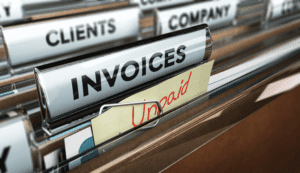
The condition of the asset is an essential factor in determining its salvage value. An asset in good condition is likely to have a higher salvage value compared to one that is damaged or in poor condition. Since the IRR is higher than the discount rate of 12%, the project is profitable and should be accepted. Lastly, if we apply the scrap value approach, we would assess the value of the machinery’s individual components. You can use this formula to determine the salvage value and assess the return on investment of an asset.
Salvage Value – A Complete Guide for Businesses
First, companies can take a percentage of the original cost as the salvage value. Depreciable assets are used in the production of goods or services, such as equipment, computers, vehicles, or furniture, and decrease in resellable value over time. Discover how to identify your depreciable assets, calculate their salvage value, choose the most appropriate salvage value accounting method, and handle salvage value changes. You must remain consistent with like assets; if you have two fridges, they can’t be on different depreciation methods. The straight-line method is suitable for assets that are expected to assets = liabilities + equity provide equal benefit over their useful life, such as buildings or vehicles.
Salvage Value: How to Estimate and Incorporate It in Capital Expenditure Analysis
Financial accountants often use five primary depreciation methods to create depreciation schedules. These are the sum-of-years digits, straight-line, units of production, double-declining balance, and declining balance. The company estimates that the asset’s salvage value will amount to $10,000 in the next five years once it plans to discard the asset. XYZ company then expects to put the asset up for sale, thereby eliminating the asset from the company’s accounting records. Salvage value refers to the estimated value or price of an asset after it has entirely expensed its depreciation.
- NPV of the Investment Finally, the NPV of the investment in the project is the sum of the present values of each cash flow as calculated above.
- The depreciation rate refers to how the asset will be written in the accounting books.
- To calculate the annual depreciation expense, the depreciable cost (i.e. the asset’s purchase price minus the residual value assumption) is divided by the useful life assumption.
- It’s a critical component in calculating depreciation and can significantly impact financial statements and tax calculations.
- Salvage value is important in accounting as it displays the value of the asset on the organization’s books once it completely expenses the depreciation.
How To Calculate an Asset’s Salvage Value

Market conditions play a significant role in determining an Catch Up Bookkeeping asset’s salvage value. The balance between supply and demand in the resale market affects an asset’s salvage value, with high demand leading to higher salvage values and low demand resulting in lower values. The salvage value has a significant impact on financial metrics used in investment analysis, such as Net Present Value (NPV) and Internal Rate of Return (IRR). Accurate salvage value estimates are essential to ensure that these metrics reflect the true value of an investment, guiding decision-makers in selecting profitable projects. Companies can also use industry data or compare with similar existing assets to estimate salvage value. To accurately calculate the salvage value, businesses must consider the asset’s maintenance costs, which can significantly impact its residual value.

Valuing Unique or Specialized Assets
- Annual straight line depreciation for the refrigerator is $1,500 ($10,500 depreciable value ÷ seven-year useful life).
- A key factor in the salvage value equation is the asset’s useful life, which can vary depending on its type and usage.
- Inflation affects the real value of money and can impact the salvage value of assets.
- A company uses salvage value to estimate and calculate depreciate as salvage value is deducted from the asset’s original cost.
A positive NPV indicates that the project is profitable, while a negative NPV indicates that the project is unprofitable. Lastly, the scrap value approach focuses on the value of the asset’s individual components or materials. By assessing the value of the asset’s parts, such as metals or components with resale potential, an estimate of the salvage value can be derived. A salvage value zero salvage value means that at the end of its useful life, the asset is expected to have no resale or trade-in value.
Minecraft Enchantment Order Calculator Minimize XP Costs

To calculate the salvage value using this method, multiply the asset’s original cost by the salvage value percentage. In order to find an asset’s residual value, you must also deduct the estimated costs of disposing the asset. If you earn capital gains on the disposal of an asset, you’ll typically be required to pay tax on that amount.

